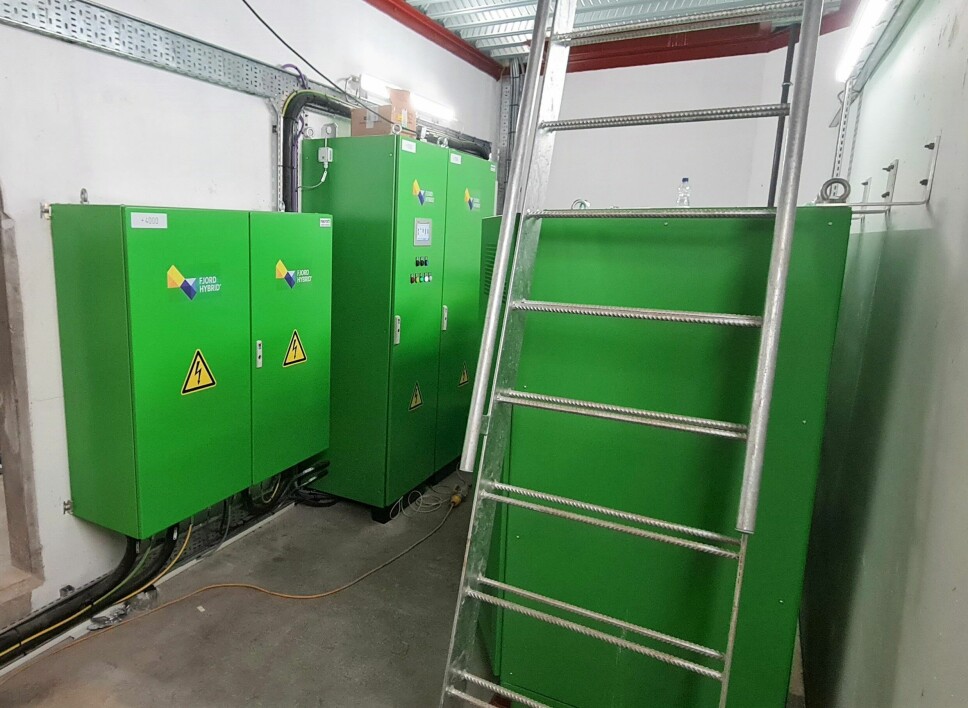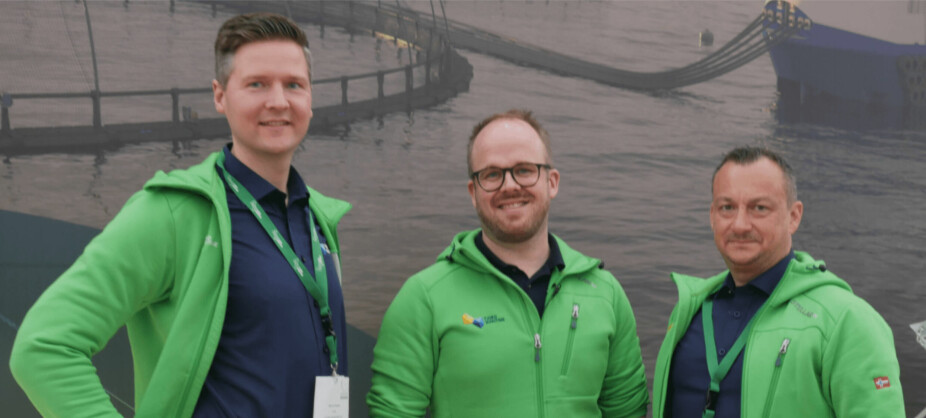
Cooke to refit feed barge with hybrid power system
Supplier Fjord Hybrid expects retrofit contract to be first of many in Scotland
Salmon farmer Cooke Aquaculture Scotland has ordered its first retrofit hybrid power system for a feed barge after the successful operation of a purpose-built hybrid barge delivered to its Mill Bay site off Stronsay in April.
The retrofit system, which will be installed in a barge at Cooke’s Vestness certified organic site off Papa Westray in Orkney, comes from Norwegian company Fjord Maritime, which supplied the hybrid power system for the Stronsay barge.
Standard feed barges rely on a diesel generator for power whereas a hybrid system relies on batteries. A hybrid still uses a generator to recharge the batteries, but this is operated for a much shorter time than on a standard barge, reducing fuel consumption, noise, and greenhouse gas emissions, and saving the operator thousands of pounds in running costs.
57% fuel saving
The Stronsay barge – a 200-tonne-capacity SeaMate built by Inverness-based Gael Force Group - has been using a generator for approximately four hours a day, reducing fuel consumption by 57%.
After that barge was delivered in April, Cooke’s North Isles manager Stewart Rendall said the company was exploring options to deploy the technology across its fleet in Orkney and Shetland, and it has now taken the first step to do so.

Installing a hybrid solution on new-build barges has more and more become a new standard, but the biggest impact on the environment will be to install the Fjord Hybrid on the existing barges in the UK
Fjord Maritime sales and marketing manager Torstein Nygård said the retrofit would be completed before the end of the year.
“Installing a hybrid solution on new-build barges has more and more become a new standard, but the biggest impact on the environment will be to install the Fjord Hybrid on the existing barges in the UK,” said Nygård.
“You reduce the fuel consumption, you reduce the carbon footprint, and the lifetime on existing equipment increases. The partnership we have managed to build together with Cooke Aquaculture Scotland is amazing. They are really interested to invest in green technology that can make their production of fish even more sustainable.”
UK sales manager

Fjord Maritime has installed hybrid technology on more than 120 barges around the world and sees Scotland as an important new market. It has hired a new UK sales manager, Magnus Salbu, and is targeting orders for 20 hybrid systems in Scotland this year.
“We are opening a Fjord Maritime office in Fort William this autumn,” said Salbu. “We see the importance of being hands on in the UK market, and I look forward to building more partnerships with UK fish farmers the coming months and years.”
The company’s chief commercial officer, Øyvind Bakke, said: “We are very much looking forward to entering the Scottish market in full scale. To be able to help aquaculture in the UK with our hybrid solution, like we have done with Cooke Aquaculture Scotland, is a great opportunity for us.”
30 months to pay for itself
Fjord Hybrid calculates that the payback time for a Fjord Hybrid is on average 2.5 years in the UK market, based on reductions in fuel, service and maintenance costs.
“But there is also an added value that comes with the reduced noise pollution, reductions in greenhouse gases and last but not least the 24/7 monitoring you get with the Fjord Control System,” said Nygård.
“That secures the power supply that’s crucial for producing fish and reduces the risk of blackouts or blinks while producing. We also carry out continuous energy optimisation after the Fjord Hybrid is installed. That reduces our customer’s operating expenses on a barge by another 10-20%.”
'No downtime'
In a short film made by Fjord Hybrid about Cooke’s experience with its first hybrid barge, Stronsay site manager Norman Peace said monitoring technology ensured that Fjord Hybrid was alerted if there were any issues with the system and rectified them immediately.
“There’s no downtime, we’ll have less maintenance, we’re using a lot less fuel, which will save the company thousands,” said Peace. “Anywhere [that I am], I can take my phone out and I can you tell you right now whether [the barge is] running on battery, generator, what power it’s used, and to me that’s very handy, especially with the weather [because] sometimes you can’t get to site.
“At the end of the month you can get monthly reports and you can compare that over time and you say can where maybe you can improve.”
